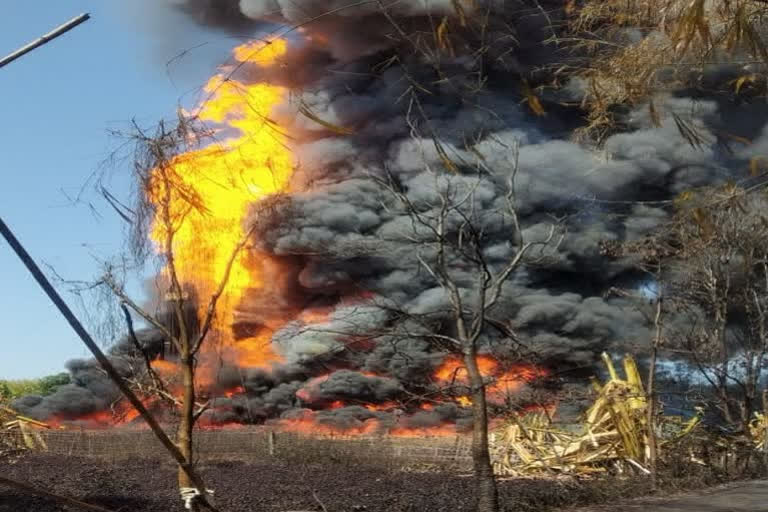New Delhi: The gas leak and the consequent inferno that is still blazing in eastern Assam’s Baghjan number 5 gas well is due to gross human error and could have been totally avoided if standard operating procedures had been followed, a top source familiar with the process of inquiry has told ETV Bharat.
According to the government source, a 100-metre-long tube of special cement was applied at depth 1,000-900 metres to seal the gas leak but that was opened even before the cement had been allowed to properly be set, resulting in the ‘blow out’. ‘Blow out’ is the uncontrolled surge of oil or gas from a well.
“The WOC (waiting on cement) was originally planned for 48 hours. But the second barrier BOP (blow out preventer) was removed in 16 hours only. Cement sample was not set at that time,” the source said, on condition of anonymity. The BOP was to be removed to undertake further work in the well.
Critically, the plan to seal the leak did not include verification of the position and strength of the cement plug.
Read: Baghjan fire: NGT imposes Rs 25 crore fine on Oil India Ltd
“After the gas kick (gas surge) was detected by the driller, the response of the crew members of John Energy Limited was not per procedure. The immediate response should have been to put the BOP (second barrier) back,” the source pointed out.
While the gas leak began on May 27, it exploded into a huge fire on June 9. The catastrophic inferno has been raging since then with foreign experts being called in from Singapore and the US to put out the fire.
The leak began during ‘work over’ operations carried out by M/s John Energy, an Ahmedabad-based private firm specializing in oilfield services when the ‘blow-out‘ occurred as gases including propane, methane, and propylene gushed out in an up-rush.
‘Work over’ is the undertaking of major maintenance or remedial measures in oil or gas wells while the BOP is a plug on the surging gas.
The inquiry has identified the root cause as a probable gas trapped zone at a depth of between 3,737.5- 3,574 metre which could not circulate properly and led to the “well becoming underbalanced”.
While two Oil Indian Limited (OIL) firemen have died in the fire till now, there has been widespread loss to property, vegetation and environment.
The Baghjan Well is situated between two biodiversity spots—the ‘Maguri Motapung’ wetland on one side and the Dibru-Saikhowa National Park on the other. Reports speak of immense damage to the surrounding area by the gas ‘blow out’ and the consequent fire.



